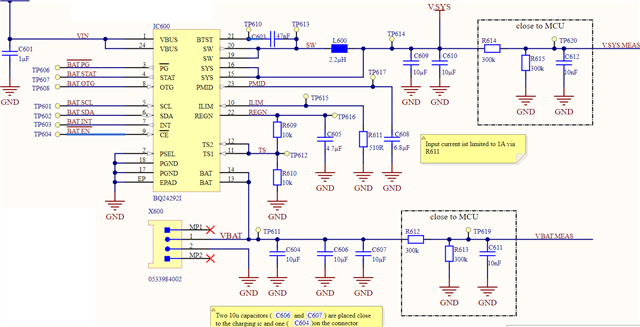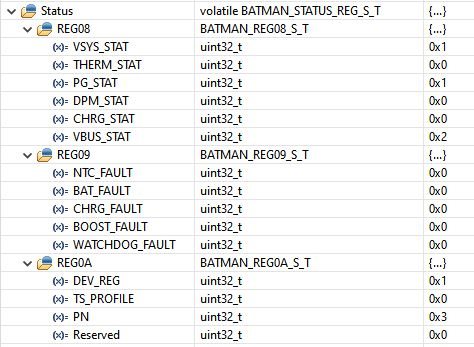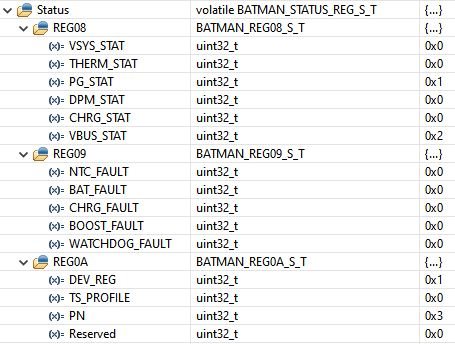Tool/software:
I have a setup with the following schematics:
VIN is the Vbus of an USB-C Port to which the device is the peripheral/device, never the host.
Now what I am trying to do, is to disconnect the Battery (via I2C host) from the device for end of line measurements, where we want to see device consumption via Vbus (since the device is already assembled and the USB is the only connection to the outside). From my understanding, disabling charging via CE = high or CHG_CONFIG(REG01[4:5]) = 0 and disabling the BATFET via BATFET_Disable (REG07[5]) should do the trick (watchdog is also disabled). This seems to have the desired effect with a Battery that is not fully charged, but if I connect a battery with a voltage around VREG, I get additional consumption at Vbus of around 22mA and a load change on Vsys is no longer 1:1 reflected in that input current.
What could be happening there and how do I prevent it?




